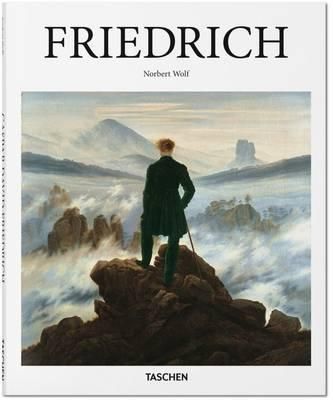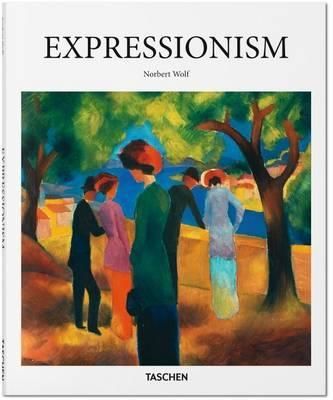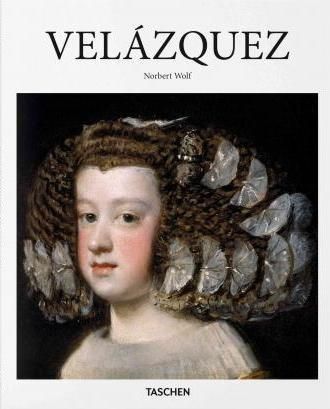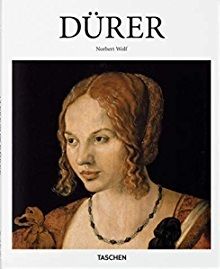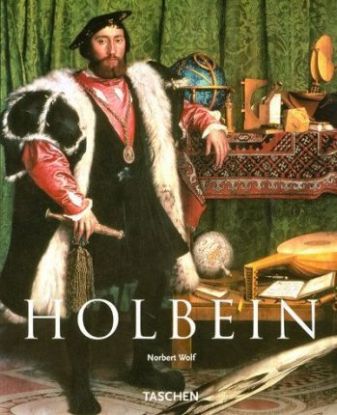Norbert Wolf strana 2 z 2
autor
Codices Illustres
Famous Manuscripts. This is the fascinating world of medieval miniature painting and illumination. From The Book of Kells to Boccaccio's Decameron and from the Vienna Genesis to Dante's Divine Comedy - see the breathtaking originals of 167 of the greatest classics of all time. This lavishly produced book introduces the reader to the fascinating world of medieval miniature painting and illumination. 167 of the most beautiful and important medieval scripts from the 4th century to 1600 are presented in chronological order and described in full. Each sample of script is headed by highly informative synopses which serves to orient the reader at a glance. These synopses-together with the abundance of brilliant, large-format reproductions-make this book unparalleled in its field. Although the focus is on European manuscripts (French, Dutch, German, Italian, English and Spanish), examples have also been selected to illustrate the refinement and intricacy of manuscript illumination from non-European cultures (Mexican, Persian, Indian, Ottoman etc.). A 36-page appendix contains biographies of the artists as well as an extensive bibliography, an index and, most importantly, a glossary in which the technical terms used in the book can quickly be found. This is a rare opportunity to come face-to-face with incredibly precious treasures that one would otherwise never see, treasures once belonging to emperors and kings, and now worth many millions. This edition by TASCHEN author editor Ingo F. Walther, is now available in a new format.
Vypredané
32,25 €
33,95 €
Art Nouveau
The Art Nouveau movement became an international phenomenon at the beginning of the twentieth century that ushered in the era of modernity in almost every aspect of cultural life. For decades critics have argued that Art Nouveau was not an artistic period in its own right, but an amalgam of artists and styles that served as a bridge between neoclassicism and modernism. In this comprehensive, authoritative and copiously illustrated book, art historian Norbert Wolf explores Art Nouveau as a logical outgrowth of the historic forces in which it arose. This book focuses on the movement's wide variety of applications and reclaims its prominence in the pantheon of modern art history. Chapters on aesthetics, spirituality and the cult of beauty offer luminous examples of works by Mucha, Gaudi, Hoffmann, Klimt, Horta, Munch and Tiffany, among many others. Wolf's text is both informed and accessible, providing an exciting narrative that brings the Art Nouveau movement into clear focus. Beautifully produced to appeal to a wide range of readers, this new edition gives one of the world's most popular styles the serious consideration it deserves.
Vypredané
47,50 €
50,00 €
Friedrich, C.D.
The solitude of man and the bleak beauty of nature are prominent themes in the work of Caspar David Friedrich (1774-1840), the great romantic painter whose importance and influence have often been underestimated. Now widely considered to be the most important German artist of his generation. Friedrich died in obscurity and wasn't fully appreciated until the early 20th century. An important precursor to the Expressionists, Friedrich once wrote that an artist must "close your bodily eye so that you may see your picture first with the spiritual eye. Then bring to the light of day that which you have seen in the darkness so that it may react upon others from the outside inwards."
Expressionism
This visceral life: Seeing the world through Expressionist eyes Sharp angles, strange forms, lurid colors, and distorted perspectives are classic hallmarks ofExpressionism, the twentieth century movement thatprioritized emotion over objective reality. Though particularly present in Germany and Austria, the movement s approach flourished internationally and is today hailed asone of the most influential shifts in art history.With leading groupsDie Brucke(The Bridge) andDer Blaue Reiter(The Blue Rider), and key players such as Wassily Kandinsky, Egon Schiele, andEmil Nolde, the Expressionists disowned Impressionism, which they regarded as man lowered to the position of a gramophone record of the outer world, to depict instead araw and visceral experienceof life as it was felt, rather than seen on the surface. Their paintings brim with emotive force, conveyed in particular throughintense and non-naturalistic color palettes, loose brushwork, and thick textures.Covering the group s stylistic tendencies, influences, and most important protagonists, this introductory book explores the Expressionist panorama of moods, ideas, and emotions and their abiding quest for deep authenticity. About the series: Each book in TASCHEN's Basic Genre series features: approximately 100 colour illustrations with explanatory captions a detailed illustrated introduction plus a timeline of the most important political, cultural, and social events that took place during that period a selection of the most important works of the epoch, each presented on a 2-page spread with a full-page image and accompanying interpretation, as well as a portrait and brief biography of the artist "
Symbolism
May 1884 saw the publication in Paris of a fin de siecle novel that became a perverse sensation on the European cultural scene. A Rebours (translated both as Against the Grain and Against Nature) by Joris-Karl Huysmans was written as a seductive textbook of decadence, an antidote to the "banality" of the dominant literary styles, Naturalism and Realism. Symbolism, whose influence would endure well into the modernist era, was an artistic religion-substitute, a spiritually charged cult of beauty. A Symbolist picture or sculpture is deliberately mysterious. In place of intellectual comprehension, the work seeks to have the beholder experience its esoteric depths like a vision. It is no wonder that Symbolists created some of the most fascinating artworks of their age. Featured artists: Arnold Bocklin, Edward Burne-Jones, Puvis de Chavannes, Thomas Cole, Jean Delville, Maurice Denis, James Ensor, George Frampton, Paul Gauguin, Ferdinand Hodler, Ernst Josephson, Fernand Khnopff, Gustav Klimt, Max Klinger, Georg Kolbe, Frantisek Kupka, Frederick Lord Leighton, Jacek Malczewski, Hans von Marees, James Abbot McNeill Whistler, Piet Mondrian, Gustave Moreau, Edvard Munch, Nestor, William Degouve de Nunques, Pablo Picasso, Odilon Redon, Felicien Rops, Dante Gabriel Rossetti, Giovanni Segantini, Charles van der Stappen, Franz von Stuck, Felix Vallotton, Elihu Vedder, and Georg Frederick Watts.
Vypredané
15,68 €
16,50 €
Velazquez
Master of illusion: Velazquez, virtuoso of the Spanish Golden AgeCourt painter to King Philip IV of Spain, Diego Rodriguez de Silva y Velazquez (June 1599 August 6, 1660) is not only a leading light of the Spanish Golden Age, but among the most celebrated masters in all Western art history. Monet and Renoir, Corot and Courbet, Degas and Dali all hailed his influence. Picasso was so inspired by his masterpiece Las Meninas that he painted 44 variations of it.Velazquez s importance is found particularly in his naturalist approach, in contrast to the more ubiquitous idealized manner of his age. Early works included numerous bodegones, genre scenes of everyday life in early 17th century Spain, in which warm, rich tones and textures set off the most ordinary of subjects and humble of faces, such as Old Woman Frying Eggs.Later, his portraiture for the Royal Court brought the same naturalism to the highest echelons of society, marking a profound shift in the depiction of royalty with softer, more relaxed poses that offered his subjects a human warmth and character as much as a sense of grandeur. Velazquez s most famous work, Las Meninas, was also painted in the royal court, but in its enigmatic composition raises many broader questions about reality and illusion and the relationship between the painter, painting, and viewer.This fresh TASCHEN Basic Art 2.0 edition introduces Velazquez through key works from throughout his career. From humble genre scenes to the royal portraits, the exquisite Rockeby Venus nude, and the ever-mysterioius Las Meninas, we explore his exceptional attention to composition, masterful handling of tone, and his remarkable influence as, in Manet s words, the greatest painter of all. About the series: Each book in TASCHEN s Basic Art series features: a detailed chronological summary of the life and oeuvre of the artist, covering his or her cultural and historical importance a concise biography approximately 100 illustrations with explanatory captions".
Vypredané
15,68 €
16,50 €
Dürer
The prints of darkness The art, theory, and woodcut print revolution of Albrecht Durer A polymath of the German Renaissance, Albrecht Durer (1471 1528) was a prolific artist, theorist, and writer whose works explored everything from religion to art theory to philosophy. His vast body of work includes altarpieces, portraits, self-portraits, watercolors, and books, but is most celebrated for its astonishing collection of woodcut prints, which transformed printmaking from an artisan practice into a whole new art form. Durer s woodcuts astonish in scale as much as detail. Through works such as Apocalypse and the Triumphal Arch for Emperor Maximilian I, he created dense, meticulous compositions that were much larger, much more finely cut, and far more complex than any earlier woodcut efforts. With an ambitious tonal and dynamic range, he introduced a new level of conceptual, emotional, and spiritual intensity. His two major woodcut series on Christ s Passion, named The Large Passion and The Small Passion after their size, are particularly remarkable for their vivid human treatment of the Christian narrative. In his copper engraving, Melancholia I, meanwhile, Durer created a startling vision of emotional ennui, often cited as a defining early image of a depressive or melancholic state. Ever inquisitive, Durer absorbed ideas not only from masters and fellow artists in Germany but also from Italy, while his own influence extended across Europe for generations to come. In this essential TASCHEN introduction, we explore this pioneering figure s complex practice, his omnivorous intellect, and the key works which shaped his enduring legacy.About the series: Each book in TASCHEN s Basic Art series features: a detailed chronological summary of the life and oeuvre of the artist, covering his or her cultural and historical importance a concise biography approximately 100 illustrations with explanatory captions"
Holbein
Renaissance presence Hans Holbein the Younger, portraitist extraordinaire Religion, Renaissance, and Reformation - these three ideologies shaped the world of 16th-century portraitist Hans Holbein the Younger (1497/98-1543), a pivotal figure of the Northern Renaissance, whose skills took him to Switzerland, Belgium, Italy, and England, and garnered patrons and subjects as prestigious as Henry VIII, Thomas More, Anne of Cleves, and Reformation advocate Thomas Cromwell. While he started out with, and maintained, a repertoire of religious works, Holbein is regarded above all as one of the greatest portraitists in Western art history. His probing eye was matched with a draftsman mastery of line and an almost supernatural ability to control details, from the textures of luxurious clothing to the ornament of a room. He combined this meticulous mimesis with an inspired amalgam of regional painterly traits, combining Flemish-style realism, late medieval German composition, and Italian formal grandeur to astonishing effect. During his time in England, Holbein became official court painter to Henry VIII, producing both reformist propaganda and royalist paintings to bolster Henry' status as monarch and as the new Supreme Head of the Church following the English Reformation. His portrait of Henry from 1537 is regarded not only as a portraiture pinnacle but also as an iconic record of this transformative monarch and the Tudor dynasty. Through this turbulent period, Holbein also produced anti-clerical woodcuts, and sketched and painted Lutheran merchants, visiting ambassadors, and Henry's notorious succession of wives. In this Basic Art introduction, we survey some of Holbein's key works from his illustrious and international career. Along the way, we discover a period as ripe with artistic innovation as with courtly drama and radical religious change, and an artist who made as much of a historical mark as the subjects he painted.
Landscapes
Enigmatic and ambiguous in its role as both setting and subject, the landscape has been one of the most important genres in painting for centuries. This dedicated survey spans the late Middle Ages to modern times to bring the evolution of the landscape genre to life through its most critical works, executed by groundbreaking artists as diverse as Titian and Warhol.
As a form, landscapes represent the topography of the natural world as much as our own; reflecting the diversity of earth’s vistas, but also keen indications of developments in representational aesthetics, religious and political history, notions of the sublime and the romantic, as well as the arrival of modernity and the vast changes wrought on the environment by industrialization and urbanization.
Opening this insightful volume is an introductory essay offering a meticulous overviewof the genre and its most crucial developments. Luscious double-page spreads on each of the 34 featured artworks include a crisp painting reproduction and an extensive art historical analysis on the masters of the form—including such greats as Hieronymus Bosch, Pieter Bruegel, El Greco, John Constable, Claude Monet, and David Hockney.
Vypredané
15,68 €
16,50 €
Codices Illustres
These paradigms of miniature painting from the fourth century to 1600 are worth many millions and typically tucked away in private collections or closely guarded archives until now. Discover some of the most beauti-ful and important manuscripts from the Middle Ages in this collection of brilliant large format reproductions, complete with a 36-page appendix detailing artist biographies, an index, and a glossary.
Vypredané
33,20 €
34,95 €
Gustav Klimt
Now available in a new edition, this intimate book captures the sensual pleasure of an artist’s sketchbook as well as the genius behind Gustav Klimt’s vision of women. Throughout his career, Gustav Klimt completed hundreds of paintings and thousands of drawings of delicate beauty, many of them featuring the female form. Designed to imitate an artist’s sketchbook, this gorgeous volume reproduces Klimt’s most beautiful erotic sketches and watercolors. The experience of viewing them will awaken the senses and afford the reader the guilty pleasure of leafing through an artist’s most private visions.
Vypredané
23,28 €
24,50 €
Giotto de Bondone
"A másik, név szerint, Giotto, olyan kiváló elme volt, hogy mindazon dolgok közözz, amelyeket az anyatermészet létrehozott égboltunk alatt, egyetlen egy sem akadt, amelyet ne tudott volna ecsetjével és íróvesszőjével híven visszaadni." (Giovanni Boccaccio)
Vypredané
7,20 €
7,58 €
Lacná kniha Giotto de Bondone (-95%)
"A másik, név szerint, Giotto, olyan kiváló elme volt, hogy mindazon dolgok közözz, amelyeket az anyatermészet létrehozott égboltunk alatt, egyetlen egy sem akadt, amelyet ne tudott volna ecsetjével és íróvesszőjével híven visszaadni." (Giovanni Boccaccio)
Vypredané
0,38 €
7,58 €
dostupné aj ako:
Lacná kniha Codices Illustres (-90%)
Famous Manuscripts. This is the fascinating world of medieval miniature painting and illumination. From The Book of Kells to Boccaccio's Decameron and from the Vienna Genesis to Dante's Divine Comedy - see the breathtaking originals of 167 of the greatest classics of all time. This lavishly produced book introduces the reader to the fascinating world of medieval miniature painting and illumination. 167 of the most beautiful and important medieval scripts from the 4th century to 1600 are presented in chronological order and described in full. Each sample of script is headed by highly informative synopses which serves to orient the reader at a glance. These synopses-together with the abundance of brilliant, large-format reproductions-make this book unparalleled in its field. Although the focus is on European manuscripts (French, Dutch, German, Italian, English and Spanish), examples have also been selected to illustrate the refinement and intricacy of manuscript illumination from non-European cultures (Mexican, Persian, Indian, Ottoman etc.). A 36-page appendix contains biographies of the artists as well as an extensive bibliography, an index and, most importantly, a glossary in which the technical terms used in the book can quickly be found. This is a rare opportunity to come face-to-face with incredibly precious treasures that one would otherwise never see, treasures once belonging to emperors and kings, and now worth many millions. This edition by TASCHEN author editor Ingo F. Walther, is now available in a new format.
Vypredané
3,40 €
33,95 €
dostupné aj ako:


